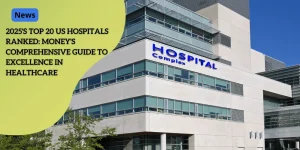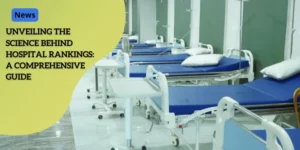New Study Reveals: Colonoscopy Rates Surge Among Younger Adults

Anúncios
The U.S. Preventive Services Task Force has recently updated its guidelines, lowering the recommended starting age for colorectal cancer screening from 50 to 45.
This shift comes in response to the rising incidence of colorectal cancer among younger adults over the past two decades.
Anúncios
The lower screening age is intended to facilitate early detection, which is crucial for effective treatment and improved survival rates.
Starting screenings at 45 aims to identify cancerous and precancerous conditions earlier, potentially reducing the number of late-stage cancer diagnoses.
Anúncios
Early detection through screening can significantly enhance treatment outcomes, making this adjustment a timely and necessary intervention.
It’s also important to note that the Task Force’s endorsement carries significant weight, as it ensures insurance coverage for these screenings, making them more accessible and appealing to a broader population.
While this change marks a progressive step towards combating colorectal cancer, its real-world impact remains to be seen as awareness and implementation grow.
Study Findings: Increase in Younger Adult Screenings
Threefold Increase in Screenings Among 45-49 Year Olds
The new age recommendation for colorectal cancer screenings, which lowered the starting age from 50 to 45, has led to a significant uptick in screening rates among younger adults.
Since the U.S. Preventive Services Task Force (USPSTF) updated their guidelines, there has been a notable threefold increase in screenings among individuals aged 45 to 49.
This shift is especially promising given the rising incidence of colorectal cancer in younger populations.
Overall Screening Rates Remain Low Despite Increase
Despite this increase, the overall screening rates remain low. Data analysis of over 10 million individuals insured by Blue Cross Blue Shield indicate that the rates rose from 0.5% to 1.5% in this age group after the guideline change.
While a 1% increase may seem minor, it translates to hundreds of thousands of people getting potentially life-saving screenings.
This demonstrates a rapid adoption of the new guidelines, even during the ongoing challenges presented by the pandemic.
Data Analysis of Over 10 Million Insured Individuals
The comprehensive study that evaluated over 10 million Blue Cross Blue Shield insured individuals adds a significant layer of credibility to these findings.
It highlights not just the increase in screening uptake but also the disparities that still exist.
People living in wealthier areas saw the most substantial increases in screening rates compared to those in lower socioeconomic regions, despite being insured.
These findings underline the essential role of awareness and accessibility in cancer prevention.
Further steps are needed to ensure equitable healthcare access for all population segments to continue this positive trend.
Impact of Task Force Recommendation
Ensuring Insurance Coverage
The U.S. Preventive Services Task Force’s recent endorsement to lower the recommended colorectal cancer screening age from 50 to 45 has significant implications, especially regarding insurance coverage.
This endorsement means that insurance providers must now cover the cost of screenings for the younger age group, making it financially feasible for millions more people.
This is crucial because one of the largest barriers to getting screened has always been the cost involved.
Swift Adoption Despite Challenges
The rapid adoption of the new guidelines is impressive, particularly given the logistical and healthcare challenges posed by the pandemic.
According to the study’s lead author, Sunny Siddique, the guideline changes have led to a threefold increase in screenings among 45 to 49-year-olds.
This quick uptake is an encouraging sign, highlighting that when barriers such as cost are removed, many are willing to participate in preventive healthcare measures.
Significance of a 1% Increase
While a 1% increase in screening rates might appear negligible, the reality is quite different.
For instance, among the over 10 million Blue Cross Blue Shield insured individuals studied, this small percentage equates to hundreds of thousands of additional screenings.
As Dr. Siddique pointed out, the cumulative effect of this seemingly small increase is substantial, potentially leading to earlier detection and better treatment outcomes for many.
This newfound momentum in colorectal cancer screening is a promising development.
However, there are still obstacles that need to be addressed to ensure equitable access to these crucial health services.
Socioeconomic Disparities in Screening Uptake
Disparities in Wealthier vs. Low Socioeconomic Areas
The recommendations from the U.S. Preventive Services Task Force to lower the colorectal cancer screening age have spurred a noticeable increase in screenings.
However, this surge reveals a stark contrast between different socioeconomic groups.
Wealthier areas saw a much higher increase in screening rates compared to less affluent regions, according to the study analyzing data from over 10 million Blue Cross Blue Shield insured individuals.
Even among insured populations, these discrepancies persist. Wealthier individuals are more likely to have access to healthcare services, thus leading to higher uptake rates in these regions.
On the other hand, those living in low socioeconomic areas face challenges that hinder their ability to access screenings, despite having insurance coverage.
Persistent Barriers in Access to Services
One of the significant barriers in lower socioeconomic regions is the availability of healthcare facilities and specialists.
Less affluent areas often have fewer medical resources, leading to longer wait times and limited access to preventive care services such as colonoscopies.
Moreover, awareness and education about the importance of early screening might be lacking in these communities, contributing to these persistent disparities.
Socioeconomic disadvantages correlate with a lack of health literacy, which further exacerbates the issue.
Insurance Coverage Doesn’t Bridge the Gap
While having insurance is a crucial factor in whether individuals get age-appropriate cancer screenings, it is not the sole determinant.
The socioeconomic landscape plays a pivotal role.
Even with insurance, individuals in low socioeconomic areas are still less likely to access these lifesaving services.
This discrepancy indicates a deeper systemic issue that goes beyond insurance coverage.
These findings highlight the need for targeted interventions and policies that not only promote early screenings but also ensure equitable access across different socioeconomic groups.
This study emphasizes how socioeconomic factors significantly impact health outcomes, underscoring the need for a multifaceted approach to address these gaps effectively.
Screening Methods and Accessibility
Colonoscopy: The Gold Standard
When it comes to colorectal cancer screening, the colonoscopy stands out as the gold standard.
This method allows doctors to not only detect cancerous tumors but also identify and remove precancerous polyps before they can develop into cancer.
Colonoscopies are thorough, offering a clear view of the colon and rectum, which makes them highly effective for early detection and prevention.
Despite other methods becoming more popular, colonoscopy remains the preferred choice for many medical professionals.
Noninvasive Screening Methods
Noninvasive screening methods have certainly made their mark by increasing the overall screening uptake.
These methods include stool tests and blood tests, which are less intimidating and easier to administer than a colonoscopy.
Notably, stool DNA tests and fecal immunochemical tests have shown significant accuracy, with some tests detecting colorectal cancer in up to 92% of cases.
The less invasive nature of these tests makes them appealing to individuals who may be hesitant to undergo a colonoscopy.
However, if these tests indicate a positive result, a follow-up colonoscopy is still required for confirmation and further examination.
The Role of Insurance Coverage
Insurance coverage plays a critical role in the uptake of colorectal cancer screenings.
One of the major predictors of whether an individual undergoes age-appropriate cancer screening is insurance status.
With the U.S. Preventive Services Task Force’s endorsement, insurance companies are now required to cover colorectal cancer screenings starting at age 45.
This removes a significant financial barrier, allowing more people to access these potentially lifesaving tests.
However, despite universal insurance among study participants, socioeconomic disparities persist, indicating that insurance coverage alone may not be sufficient to bridge the gap in healthcare access.
Continuing efforts to increase awareness and provide equitable access to these essential screenings can help ensure that more individuals benefit from early detection and prevention measures.
Conclusion: Progress and Challenges
Promising Increase in Awareness and Screening Rates
The updated guidelines from the U.S. Preventive Services Task Force have led to a notable increase in colorectal cancer screenings among younger adults.
This early detection effort has resulted in a threefold rise in screenings for individuals aged 45-49. Despite the ongoing pandemic, these findings are encouraging and reflect greater awareness among the target population.
With more people getting screened, the potential for early detection and treatment of colorectal cancer significantly improves.
Ongoing Challenges in Healthcare Access Equity
While the overall trend in screening rates is promising, socioeconomic disparities persist.
The study found that wealthier areas saw a higher rise in screening rates compared to less affluent regions.
These disparities continue even among insured individuals, suggesting that factors like healthcare facility availability and awareness play vital roles in screening uptake.
The increased use of noninvasive screening methods has contributed to the upward trend, yet access to these methods remains uneven.
Need for Continued Efforts to Improve Screening Rates Across All Populations
Addressing healthcare inequities is crucial for further progress.
More targeted interventions are needed to ensure equitable access to lifesaving screenings across different socioeconomic groups.
While advancements in screening technology and insurance coverage are significant, improving education and outreach efforts will be key.
As awareness grows and more options become available, the goal is to ensure no population is left behind in the fight against colorectal cancer.






